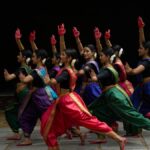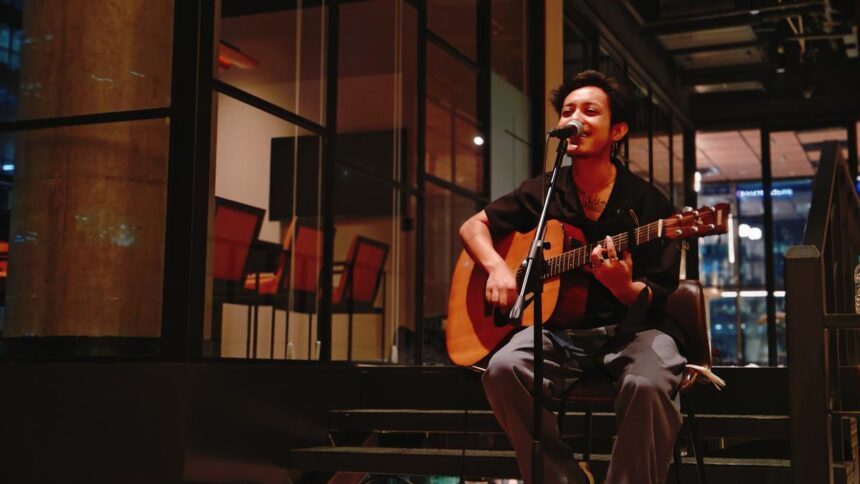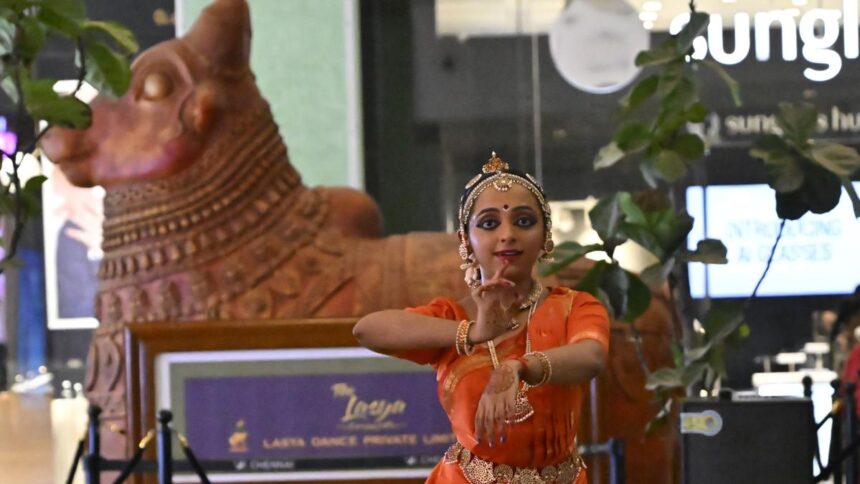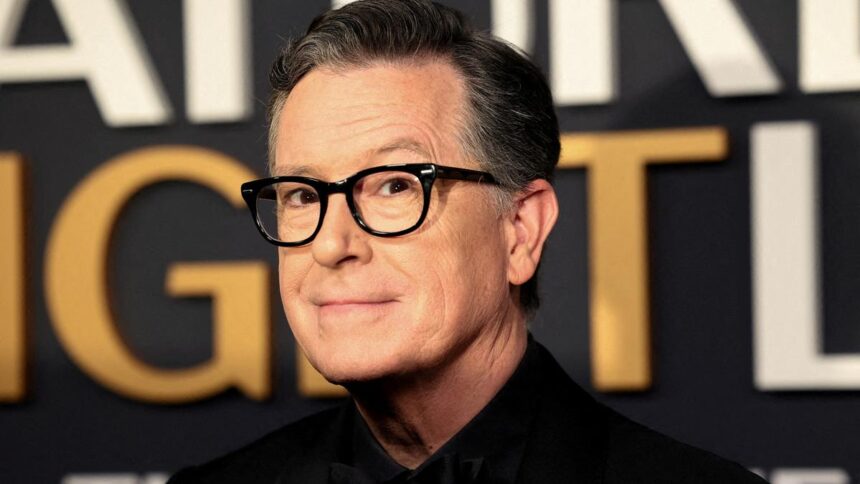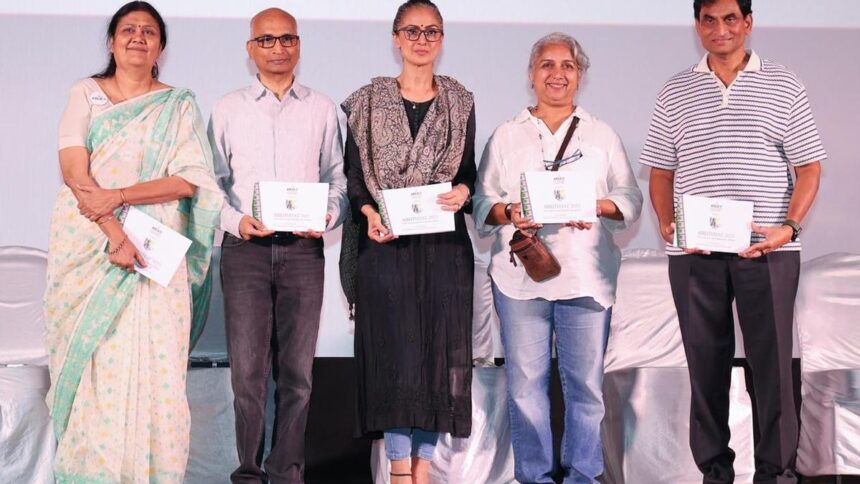Sid Sriram’s musicality is mindbogglingly diverse.
Among his inspirations is renowned Carnatic vocalist Semmangudi Srinivasa Iyer on one end of the spectrum, while American-Ghananian musician Stevie Wonder is at the other. While he listened to other musicians, these two voices stayed with him for a long time. Today, Sid can perhaps sing a little like both of them.
Watch: Sid Sriram interview: How I balance Carnatic and film music and stay connected to my roots
| Video Credit:
Shiva Raj S., Thamodharan B.
Comfortable in a kurta and veshti as he is in a pair of jeans and sneakers, evident in this recent video chat with The Hindu, the 35-year-old singer-musician burst into the Tamil film music scene with AR Rahman’s ‘Adiye’ (Kadal). A Blues version that tapped into his higher singing range, ‘Adiye’ caught the attention of everyone. This voice was special, they said.
It was. Over the years, Sid Sriram became the darling of music composers; he ended up singing for every superhit album. Aren’t there any other singers in Tamil other than Sid Sriram, someone asked during a TV discussion on music trends. The singer moved on. Apart from Tamil films, he has also made a mark in other languages, lending his voice to superhit albums; his latest hits are in the Malayalam film Narivettaand Telugu film Hit 3.
Meanwhile, his independent projects are also kicking off. His most recent signing is a joint venture with Warner Music India to champion South Indian sounds for the future. Here, an exclusive chat with this boundary-blurring artist on his inspiration and vision for the future.
Singer Sid Sriram
| Photo Credit:
Thamodharan B
The classical touch
It was so quiet you could hear a pin drop. A hush fell over Coachella, one of the largest music and arts festivals held in California where hundreds of music fans had vibed to rock and pop music. Sid Sriram closed his set at the festival with a Carnatic rendition of ‘Sivanar Manam Kulira’ from 14th Century Tamil poet Arunagirinathar’s ‘Thiruppugazh’.
With no accompanying music or acoustics, it was just Sid Sriram’s powerful voice sweeping over the audience for those few minutes.
Sid — the first South Indian artiste to perform at this prestigious festival last year — considers this a “powerful moment.”
“It gave me the chills, man,” says Sid, “Leaving people with a prayer like this always made me feel like I was leaving them with a germ, to believe what music can do. I have always felt I am an ambassador for where I come from and my roots. Learning Carnatic music, being a Tamilian… all of this makes me who I am. But to actually see it happen [at Coachella] was a whole different feeling. It’s a sense of exhale, because it felt like I was doing the thing I set out to do.”
Singer Sid Sriram during a Margazhi performance
| Photo Credit:
Akhila Easwaran
He set out a long time ago — in fact, when he was barely three. His mother Latha Sriram, a Carnatic music guru in the US, put a young Sid on stage in 1992, because he pestered her to. “The moment I sang on stage, I fell in love with it,” he says, “There are certain moments in life when you find your calling or purpose. People sometimes spend their entire lives searching for that. But I was blessed to have that happening to me before I could even remember. For me, being surrounded by Carnatic music was a life source. I would come back home from school, and I would hear students singing ‘Sarali Varisai’. It would give me a sense of being rooted.”
As his mother was a guru, a lot of his early learning was not formal. “It was more about taking it in, and due to that, I haven’t viewed music with a sense of rigidity. It felt like an ocean that was flowing around me that I could tap into anytime,” recalls Sid, about his growing up years in Freemont, California, where the family moved a year after he was born in Chennai.
Thanks to his mother and grandfather, Sid grew up listening to MS Subbalakshmi and GN Balasubramaniam’s Carnatic renditions. But the first musician he fell in love with was Semmangudi Srinivasa Iyer. “Someone gifted us a cassette, and in that, there’s a recording of him singing ‘Navasiddhi Petralum’ in Kharaharapriya. There was an abandon in his voice. I would lie in bed listening to that repeatedly,” he recalls.
It was also the time when Carnatic musicians Sanjay Subrahmanyam and TM Krishna burst on the scene. “When they would come to the US for concerts, I would go for every one of them. They were youngsters then, and they were, to me, redefining what Carnatic music meant. There was a coolness, an edginess to them, but they were also very humble. The gravitas they held on stage was hugely inspirational,” says Sid, who is currently obsessing over Flute Mali’s recordings.
Learning this brand of music also helped a young Sid, growing up in the US, deal with his identity crisis. “While there were a lot of Indians, they were chasing other academic dreams. Music was a kind of escape for me then,” says Sid, who went on to study it at the Berklee College of Music, an experience that he believes opened many new international styles to him.
Currently, Sid Sriram is planning his Margazhi music season schedule, an annual date he seldom misses. “It [Chennai music season] is beautiful. I’ve been coming to Chennai for the Season every year since 2010. I love it for the energy. Since my film career took off, it’s been a blessing to see audiences across backgrounds and age groups attend my kutcheris. Carnatic music is a very dynamic and accessible form of music. There is a thought that it is technical and complex — which it is — but the beauty is the innate sense of connection within these parameters of technicality. Like in a film, a kutcheri can be built with different points of momentum shifts. I believe that Carnatic music is held on the bedrock of spontaneity and improvisation. I believe life is most beautiful when you are hyper-present and in the moment, and in Carnatic music, you get to do that as you explore the music and its intricacies in real time.”
Singer Sid Sriram
| Photo Credit:
S Shivaraj
The soundtrack of our times
Connecting MS Dhoni and Virat Kohli, apart from their cricketing achievements, is a superhit Tamil song.
It goes ‘Nee Singam Dhan’ (Pathu Thala) — which is Tamil for ‘You’re a Lion…’ — and has been sung by Sid Sriram.
The AR Rahman composed number, which got a renewed lease of life recently when cricket star Virat Kohli declared it as his favourite track, is just one among many blockbusters of the singer.
“I poured everything into that recording,” he recalls, “That song came to me at a very specific phase of my life when I had some pent up emotions. To see it being celebrated has been amazing. It’s a song made for champions.”
Sid’s film journey started off with ‘Adiye’ in Kadal (2013) but his tryst with popular music was earlier. When he was five, grooving to Stevie Wonder tracks was an obsession. “During one boring summer break, my parents bought me a Walkman and I accidentally chanced upon a local jazz station. It led me to discovering Stevie Wonder, an artiste who captivated me. I found in R&B (Rhythm and Blues) a kindred spirit to Carnatic music. A lot of its embellishments were similar to the brigas and gamakas,” recalls Sid, who later bought a bunch of CDs and dived into the music, thus discovering other artistes like Aretha Franklin and BB King,
“Over the next few years, I fully immersed myself into this style of music and finding ways to bridge these two musical worlds. It didn’t feel like I was stepping away from one style to another because I felt that the source point and spirit of both were the same.”
Singer Sid Sriram
| Photo Credit:
S Shivaraj
One of the turning points in his life was when he witnessed AR Rahman – a Tamilian and a musician, just like him – win the Oscars with the Tamil words, ‘Ella pugazhum iraivanukke’. “I was screaming with joy when it happened. It was such an inspiring moment. To see a person from Chennai stand on the global stage with pride… it made me feel that anything was possible,” he recalls. Watching that happen also made Sid shoot off an e-mail to Rahman with a sample of his work. “I didn’t think he would respond.”
But he did, and over a Skype call, Sid recorded ‘Adiye’ for Mani Ratnam’s Kadal, a song that catapulted him to the masses and to other music composers, who would soon tie up with him for superhit tracks, like ‘Ennai Matrum..’ (Anirudh), ‘Kannana Kanne’ (D Imman) and ‘Unna Nenachu’ (Ilaiyaraaja). So, what was the biggest difference between working with Ilaiyaraaja and AR Rahman, both top music composers? “They are not as polar opposite as people make them out to be. Both of them know what the final product will be like…it’s just that their methods that are different. But there is overlap too – and the biggest overlap about these two composers is the idea of surrendering to the moment.”
Despite Sid’s ability to belt out higher notes at will, Ilaiyaraaja chose to rope him in for a predominantly lower-note register song in ‘Unna Nenachu’ (Psycho). “I was nervous, but all I did was be present and follow every direction to the T. Over the years, what I’ve realised is that there is a full dimension of vulnerability when you tap into the lower range of your voice. Here, you are not pushing notes, but you are just resting on them. At this stage of my career, after having done this for over a decade, I wish to tap into it a little more.”
Spreading his wings to other languages, where he has found reasonable success, Sid is now keen to capitalise on his superstar singer status to spread South Indian music to newer audiences. His most recent project, The Hybridist x Warner Music India, hopes to do that, with the first two songs, ‘Sivanar’ and ‘En Kadhaa’, already making a mark. “We live in a world that focusses on trends and getting the right dance steps, and I don’t want to do that,” says Sid, who will also sign other artistes for this project apart from releasing his own music, “The core of this partnership is to create more meaningful artistic moments, and enjoy the process of making music. If we find magic in that process, the rest of it will take care of itself.”








